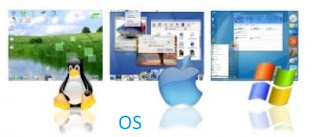Types and functions of Operating Systems
We all know them in their very different versions and platforms, sometimes using them all to find out if it meets our needs and applicability requirements.
Although we have put them to the test of our knowledge, many do not know what it represents since an operating system is specifically dedicated, which is of great importance since, without it, computers would be nothing more than a box of parts without a practical utility.
An operating system is not the only software that gives life to computers, but it is also much more than that since it comes to represent a link between the user, the installed extra applications and the different devices and peripherals that are found in a computer.
For example, to be able to work in a word processor, the user has to execute it and when doing so, it communicates with the operating system giving the corresponding permissions for its execution. Likewise, if this word processor requires printing a document, the software will communicate with the system so that it authorizes the corresponding drivers to communicate with the printer and perform its specific functions.
The operating system is the medium with which users, applications (word processor, CD recorder, music manager, among others) and devices such as RAM, hard drives, processor and others interact, in order to carry out the tasks assigned to it.
An operating system also has other implicit tasks that should be mentioned and which are:
Manage processor tasks
Manage random access memory
Input / output management
Management of the execution of various applications
Manage authorizations to users
Manage files
Management of stored information
An operating system has its own architecture, which has varied since its creation according to the proposed needs, thus having 16-bit, 32-bit, and 64-bit systems.
Although we have put them to the test of our knowledge, many do not know what it represents since an operating system is specifically dedicated, which is of great importance since, without it, computers would be nothing more than a box of parts without a practical utility.
An operating system is not the only software that gives life to computers, but it is also much more than that since it comes to represent a link between the user, the installed extra applications and the different devices and peripherals that are found in a computer.
For example, to be able to work in a word processor, the user has to execute it and when doing so, it communicates with the operating system giving the corresponding permissions for its execution. Likewise, if this word processor requires printing a document, the software will communicate with the system so that it authorizes the corresponding drivers to communicate with the printer and perform its specific functions.
The operating system is the medium with which users, applications (word processor, CD recorder, music manager, among others) and devices such as RAM, hard drives, processor and others interact, in order to carry out the tasks assigned to it.
An operating system also has other implicit tasks that should be mentioned and which are:
Manage processor tasks
Manage random access memory
Input / output management
Management of the execution of various applications
Manage authorizations to users
Manage files
Management of stored information
An operating system has its own architecture, which has varied since its creation according to the proposed needs, thus having 16-bit, 32-bit, and 64-bit systems.









No comments